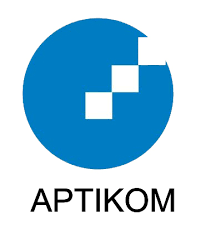Obligatory Prayer Practice Based on Mobile Learning
Abstract
Commencing with dawn, zuhr, asr, maghrib, and concluding with isha, obligatory prayers are conducted five times a day. These are the first worship that will be weighed on the last day. Printed materials are frequently utilized to teach the practice of praying. It is feasible, however, to produce a monotonous quantity of learning. Today, technology development and information have influenced an individual’s learning style and behavior. In order to provide an exciting and engaging learning environment, this study designed a mobile learning application for obligatory prayer practice. This study employed an experimental method to develop the application and questionnaires to collect the data. The application could display readings of prayers, images of the prayer movement, videos of the prayer movement, and audio readings of prayers, as well as some of the most influential summaries, positions, and laws for leaving a prayer.
Keywords
Full Text:
PDFReferences
Alzaza, N. S. (2011). Students’ awareness and requirements of mobile learning services in the higher education environment. American Journal of Economics and Business Administration 3.1, 95-100.
Anwar, S. (2009). emahaman Individu, Observasi, Checklist, Interview, Kuesioner dan Sosiometri. Yogyakarta: Pustaka Pelajar.
Arsyad, A. (2013). Media Pembelajaran edit revisi. Jakarta: Rajawali Pers.
Astuti, I. A. (2017). Pengembangan media pembelajaran fisika mobile learning berbasis android. urnal Penelitian & Pengembangan Pendidikan Fisika 3.1, 57-62.
Beutner, M. a. (2017). Acceptance of Mobile Learning at SMEs of the Service Sector. International Association for Development of the Information Society.
Cheon, J. L. (2012). An investigation of mobile learning readiness in higher education based on the theory of planned behavior. Computers & education, 1054-1064.
Diyani, D. J. (2018). Perancangan Media Pembelajaran untuk Menunjang Kegiatan Belajar Siswa Berbasis Android. STRING (Satuan Tulisan Riset dan Inovasi Teknologi) 3.2, 153-159.
Ihsan, F. (2013). Dasar-dasar Kependidikan. PT. Rineka Cipta, (Cet. 8) VIII.
Lesmana, H. C. (2016). "Perancangan aplikasi" Salat Yukk" Pada android sebagai media pembelajaran ibadah salat anak-anak. urnal Teknologi dan Sistem Komputer 4.4, 502-509.
Mouza, C. a.-G. (2015). Bridging the app gap: An examination of a professional development initiative on mobile learning in urban schools. Computers & Education 88, 1-14.
Setiawan, E. (2018). Penggunaan Media pembelajaran Berbasis Android Mata Pelajaran Fiqih kelas VII di MTs N 1 Lampung Selatan. UIN Raden Intan Lampung.
Setiawan, I. (2016). Panduan Kuliah Intensif Al-Islam (KIAI). Lembaga Pengkajian dan Pengalaman Islam (LPPI) UMY dan UNIRES Press.
Sharma, S. K. (2004). Web services architecture for m-learning. Electronic Journal of e-Learning 2.1 , 203-216.
Sugiyono. (2008). Metode penelitian pendidikan:(pendekatan kuantitatif, kualitatif dan R & D). Alfabeta.
Suparman, D. (2015). Pembelajaran Ibdah Salat dalam Perpektif Psikis dan Media. Jurnal Istek, 9 (2).
Traxler, J. (2005). Defining mobile learning. ADIS International Conference Mobile Learning.
DOI: https://doi.org/10.18196/eist.v3i2.16854
Refbacks
- There are currently no refbacks.
Editorial Office:
EMERGING INFORMATION SCIENCE AND TECHNOLOGY
Department of Information Technology, Faculty of Engineering,
Universitas Muhammadiyah Yogyakarta.
Jln. Brawijaya Tamantirto Kasihan Bantul 55183 Indonesia
Telp:(62)274-387656, Fax.:(62)274-387656

